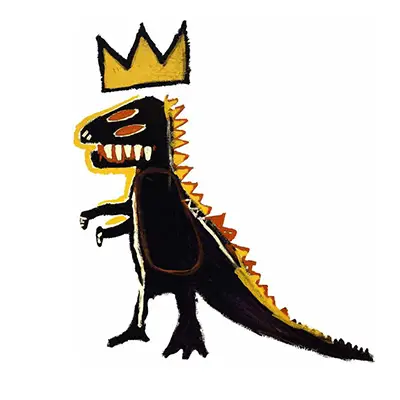It depicts a dinosaur wearing a crown, and its style and form are entirely typical of Basquiat's work, which tended to blend elements of street art with a complex, neo expressionist style.
Much of Basquiat's work was figurative, and much of it referred to popular culture and the tropes to be found in movies, cartoons and every day stores. All of these elements come together in this artwork.
Pez Dispenser refers, most immediately, to the US candy known as Pez. Pez was particularly popular in the US because of the imaginative plastic dispensers in which it was sold.
These dispensers tended to depict figures from popular culture - modern Pez dispensers have featured figures from Angry Birds. Basquiat's reference to popular culture here is, as mentioned above, typical of his work.
He was close friends with Andy Warhol, one of the leading lights of the US and UK Pop Art movement. Pop Artists aimed to draw on popular culture to challenge snobbish, high brow art.
One famous Pop Artist, also from New York City, for example, was Roy Lichtenstein, who created bold, bright, deliberately cartoonish works of art. Basquiat collaborated with Warhol many times (it is estimated that they worked together on around 100 art works) and so it is natural to assume that these two artists influenced each other at a profound level.
As well as being linked to a recognisable aspect of US society, however, Pez Dispenser is highly symbolic. Basquiat used the crown symbol very often in his work. His drawing 'Tuxedo', for example, is quite simply, a figurative drawing of a crown.
It is fair to say that throughout his career, Basquiat elevated the symbol of the crown to a deep and archetypal status and that for him it was a symbol of the class struggle and financial inequality that he documented throughout his life.
This suggests that with this art work, Basquiat may be trying to link popular consumer culture (perpetuated by well known companies such as Pez) with class oppression and social inequality.


